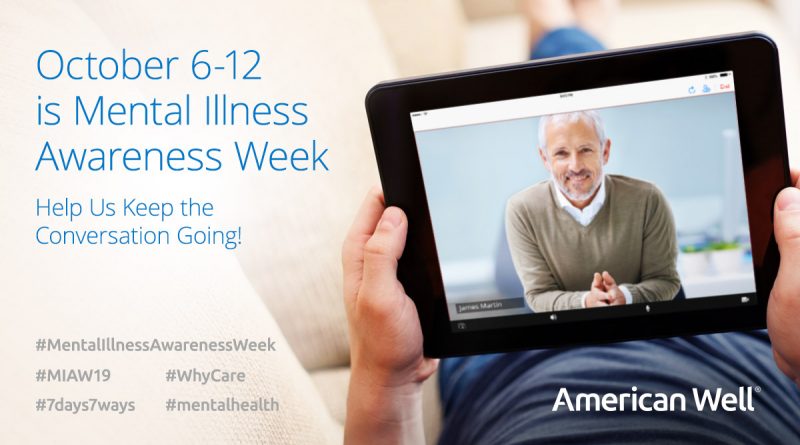A Q&A on Telehealth for Mental Health with Dr. Lindsay Henderson
With one in five U.S. adults experiencing a mental illness each year, but only about half receiving treatment, it’s important that we work to increase awareness for the different options that exist for individuals seeking care. In honor of Mental Illness Awareness Week, we sat down with Lindsay Henderson, PsyD, Amwell’s Director of Psychological Services, to learn how telehealth is helping extend access to mental health treatment.
What issues is telehealth helping to solve for when it comes to behavioral health care?
Lindsay: Two of the biggest issues include helping to solve for a lack of providers and helping to increase comfort for patients. Currently, patients often have to wait months before they are able to see a provider. Thanks to telehealth, wait times are reduced and typically patients can see a professional within days if not hours. Telehealth can also provide a more comfortable option for those seeking care, allowing patients to see a provider from within their own home. This means they can avoid running into a co-worker in the waiting room, for example. Being in their natural environment may also help patients open up more.
What are some common misconceptions that you see regarding practicing behavioral health online?
Lindsay: I think the most common misconception is that we can’t treat as many conditions. Once you find a good provider who matches what you want and need, and you can use the technology consistently and reliably, and you’re safe, we can treat almost anything online.
What conditions are you frequently seeing online?
Lindsay: We see everything that may present in a brick and mortar setting, but I most frequently see folks struggling with family and relationship stress, anxiety and depression, and life transitions.
What’s most important for providers to know about providing behavioral health care virtually, to ensure patients feel safe and secure?
Lindsay: Bed side manner is important in all settings, but there are some specific nuances when it comes to providing care virtually. I recommend starting by introducing the idea of telehealth during a patient’s first virtual visit. It’s also important to give patients a tour of the room you are in to show them that you are in a private place. Additionally, whenever you do something ‘off-camera’ like take notes, let patients know what you are doing, recognizing that they can’t see the full room from their device. Finally, be confident so patients know they are getting the same care that they would be getting in a face-to-face setting.
Do you have a favorite story about how telehealth helped someone in a unique way?
Lindsay: Lots of stories! I love seeing how this technology allows people to creatively fit mental health care into their busy lives. I worked with someone who had a very strict 60-minute lunch break each day and no other availability as a busy single mom; she saw me from her parked car outside of her office, which she called “the most private space in my life.” One of my favorite stories is when I was able to keep someone from a higher level of care by seeing them twice over a weekend. Traditional office and clinic settings rarely have Saturday and Sunday hours, so this would have necessitated an emergency room visit for the patient, but we were able to stabilize and keep her safe by meeting over the weekend.
To learn more about the state of behavioral health in America and how telebehavioral health services can help, watch our webinar here: https://business.amwell.com/resources/integrating-telemental-health-into-your-health-plan/


